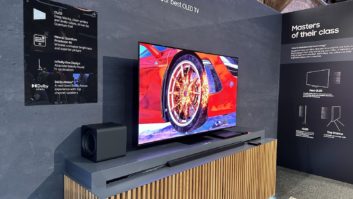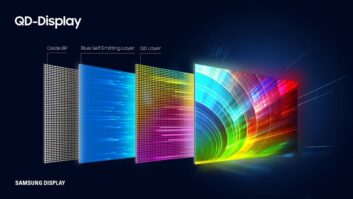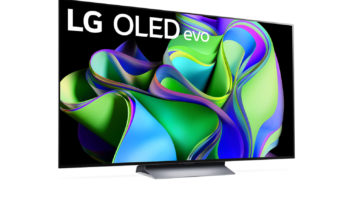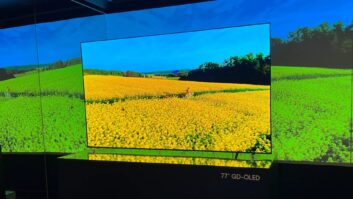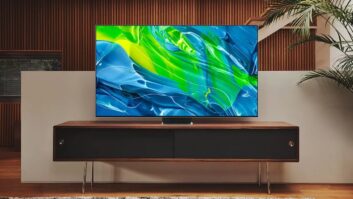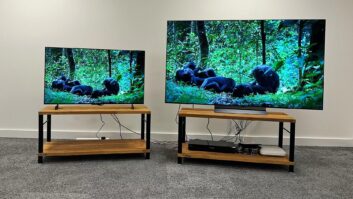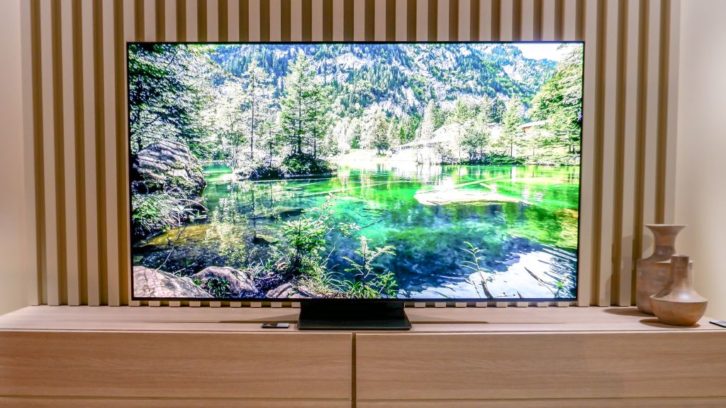
Correction June 2: Due to mistakes in our data collection process, we erroneously reported that the Rec709 color gamut of the Samsung S95B OLED was only 99%. After further review, it’s closer to 130%, similar to what we’ve seen on the LG G2 OLED.
We’ve updated and changed the headline of the story to reflect this new information and apologize for the error. We will report back once we have done further testing. We are in the process of fully updating this article and will update with any further changes.
The Samsung S95B OLED TV — Samsung’s first OLED in nearly a decade and one of the first-ever QD-OLED TVs — remains one of this year’s most intriguing TVs. Coming in 55- and 65-inch configurations, it promised all the perks of OLED panels plus the brightness and color capabilities of the company’s Quantum Dot technology. Hence the name, QD-OLED.
But does QD-OLED deliver? We just ran our series of benchmark tests on the Samsung S95B OLED TV to gauge and color reproduction, picture accuracy and maximum brightness, among other key indicators we look for in the best TVs.
We’ll admit, we had high expectations given the simultaneous launch of Sony’s first QD-OLED (using Samsung’s panel, but powered by Sony’s Bravia processor) and LG’s second-generation attempt at OLED evo. Now that we’ve tested two of this year’s headlining sets, the LG G2 OLED TV and Samsung S95B OLED TV, we have a sense of how QD-OLED performs. And how it stacks up against OLED evo.
Samsung QD-OLED: Color accuracy
When comparing TV test results, we look primarily at color reproduction, picture accuracy and maximum brightness. These benchmarks help inform our anecdotal viewing experience, letting us know which TVs might perform better (or worse) than others in a similar price range or place in the respective company’s TV lineup.
In terms of color accuracy, the S95B OLED TV tested a Delta-E accuracy score of 1.9. Any result of 2.0 or less is good, with lower scores being more accurate. This means the color being displayed on-screen closely matches what the human eye should receive. The LG G2 earned a better 1.3 score, though, which means that it’s the more accurate of the two.
Samsung QD-OLED vs. OLED evo: Brightness
Max brightness is perhaps the test we anticipated most, since QD-OLED claims excellent brightness abilities we don’t usually see with OLED. OLED TVs don’t get as bright as the best QLED TVs, since making millions of self-emissive pixels brighter can dilute color volume and cause the dreaded OLED burn-in.
But by boosting brightness with quantum dots and eliminating the white subpixel in the OLED pixel, QD-OLED should be brighter than OLED, right? That’s what we thought we’d see in our test results, but the numbers tell a complicated story.
The Samsung S95B OLED TV reached a brightness of 501.3 nits. That’s actually impressive for an OLED TV, and brighter than many OLED TVs we’ve tested. The exception is the LG G2 OLED evo TV, which is the best LG TV in terms of brightness yet. Reaching 590.5 nits when set to Vivid mode in a 10% window, it offered a 40% increase in brightness compared to last year’s LG G1 OLED TV.
We tested both TVs in their Filmmaker modes and these were the results — though, in Dynamic mode the results could be different.
So the Samsung S95B OLED TV’s QD-OLED panel is beat out in our tests by this year’s updated LG OLED evo panel, which employs a new heat dissipation system to manage brightness. But the S95B OLED TV scored higher here than the first OLED evo TV, and again, 500 nits is still great for an OLED TV. But it’s average compared to LEDs and many of the best Samsung TVs. Expect more on how Samsung QD-OLED performed differently from Samsung Neo QLED soon.
Samsung QD-OLED vs LG OLED evo: Which wins?
There are several factors that go into scoring a TV besides the tested picture performance. We also consider value, design, interface, audio quality and the remote control in our star ratings. That’s why it’s not so simple to crown a winner between the Samsung S95B OLED TV and LG G2 OLED TV. Expect further information on testing soon.
This article originally ran on tomsguide.com.
About the Author
Kate Kozuch is an editor at Tom’s Guide covering smartwatches, TVs and everything smart-home related. Kate also appears on Fox News to talk tech trends and runs the Tom’s Guide TikTok account(opens in new tab), which you should be following. When she’s not filming tech videos, you can find her on an exercise bike, mastering the NYT Crossword or channeling her inner celebrity chef.
See also: Samsung Display Brings Forward The End Of Its LCD Production




